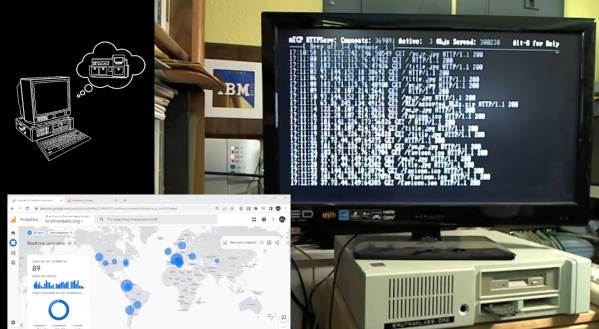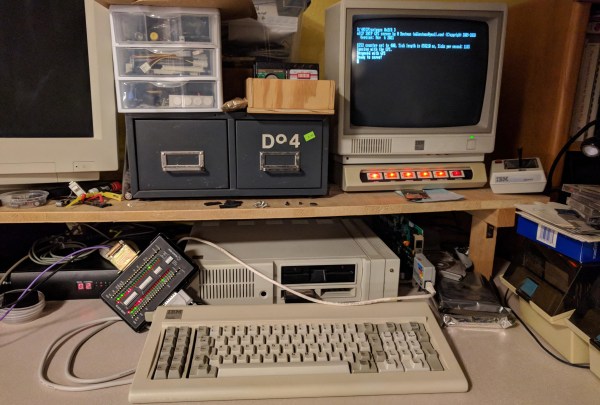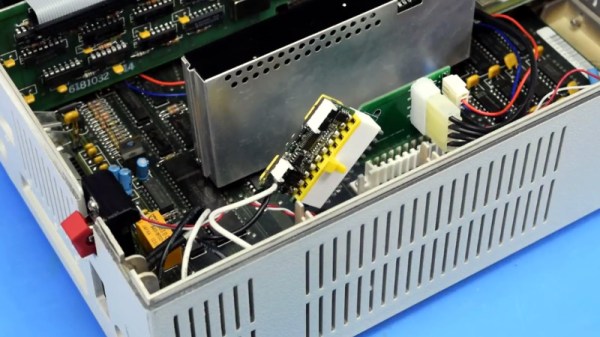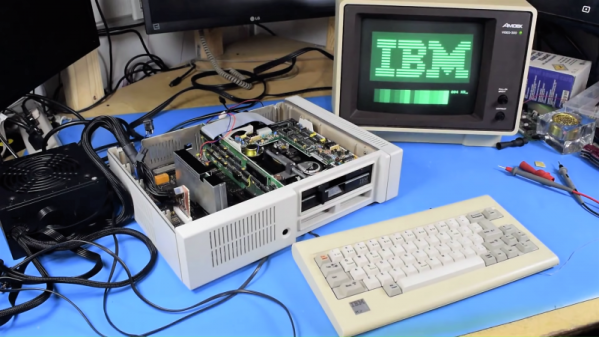It may be midwinter in Perth, but people still go to the beach there, which led to the surprising discovery earlier this week of what appears to be a large hunk of space debris. Local authorities quickly responded to reports of a barnacle-encrusted 2.5-m by 3-m tank-like object on the beach. The object, which has clearly seen better days, was described as being made of metal and a “wood-like material,” which on casual inspection is clearly a composite material like Kevlar fibers in some sort of resin. Local fire officials teamed up with forensic chemists to analyze the object for contamination; finding none, West Australia police cordoned off the device to keep the curious at bay. In an apparently acute case of not knowing how the Internet works, they also “urge[d] everyone to refrain from drawing conclusions” online, which of course sent the virtual sleuths into overdrive. An r/whatisthisthing thread makes a good case for it being part of the remains of the third stage of an Indian Polar Satellite Launch Vehicle (PSLV); reentry of these boosters is generally targeted at the East Indian Ocean for safe disposal, but wind and weather seem to have brought this artifact back from the depths.
IBM PCjr5 Articles
PCjr WebServer Hits 2500 Hours Uptime
When [Mike] fired up his PCjr webserver back in March, he probably wasn’t expecting it to go viral. 2640 hours later, here we are! Not only has his machine run continuously for over 110 days, it also is surviving a global hug of death. All of this is thanks to some very special software.
We see lots of old machines here on Hackaday. We also see lots of minimal web servers. But we don’t see many that can run for thousands of hours, offering up to 8 simultaneous connections. Curious if jr is still up? Check brutmanlabs.org. The whole website is hosted on the 40-year-old machine. If you want to be a bit more kind, here’s a direct link to the text-only status page. While many of those hours were idle, currently lots of folks are hitting that little V20 CPU, so please give it a few seconds to respond.
The PCjr has a few upgrades — the aforementioned V20 CPU upgrade, a jrIDE sidecar, and a memory upgrade to 736 kB to name a few. Ethernet connectivity is via a Xircom parallel port adapter – which is circa 1993. The operating system is IBM PC DOS 5.02. One thing to note is that all these upgrades were possible back in the mid-1980’s when the PCjr was still current. [Mike] could run the system with an MFM hard drive, an ISA ethernet card (via an adapter), and use the original CRT monitor. Older DOS versions would work too — though partition sizes would be limited. The “modern” conveniences are just to keep from wearing out vintage hardware which is quickly becoming rare.
The real glue that holds this all together is [Mike’s] own software: mTCP. mTCP is a full set of tools for running internet applications on systems running MS-DOS or a compatible OS. We’ve seen quite a few mTCP projects over the years. [Mike] has worked tirelessly testing the software, ensuring that it is stable and reliable.
Software is never perfect though – one thing [Mike] didn’t implement is a log roller. Since he has logging turned on, the PCjr was slowly filling up its hard drive. Once the drive was full, mTCP would perform an orderly shutdown — but the uptime will be reset. [Mike] was able to go in and switch off logging with DOS’s DEBUG command. A live patch is not the way one would normally update software – but the fact that he was able to do it shows how deep [Mike’s] knowledge of the software goes.
[Mike] has even provided a live stream recording of the little PCjr handling requests from all over the globe.
IBM PCjr From 1984 Keeps Today’s Clocks Running In Sync
We’ve gotten used to the fact that the clocks on our internet-connected computers and smartphones are always telling the right time. Time servers, provided by a variety of government agencies as well as tech giants, provide them with the exact time and date thanks to accurate atomic clocks and the clever Network Time Protocol (NTP). But it wasn’t always like this: back in the 1990s when many computers didn’t have an internet connection, we had to adjust our computers’ clocks manually. Go back one more decade, and many PCs didn’t even have a battery-backed clock at all; you either set the proper date and time when the computer booted, or just lived with the fact that all new files were timestamped 01-01-1980.
[Michael Brutman] decided to mix today’s world of network time synchronization with the old world of batteryless PCs, and built an SNTP Time Server that runs on a DOS PC. He tried it with two different hardware setups: a 40 MHz 386 PC from 1993, and the (in)famous IBM PCjr from 1984. A standard GPS module serves as an accurate time reference; these units can often be directly connected to old hardware thanks to the eternal RS-232 standard.
Continue reading “IBM PCjr From 1984 Keeps Today’s Clocks Running In Sync”
ATX Adapter For The IBM PCJr Now Available
We’ve mentioned previously the challenges that come with maintaining vintage computers which in some cases are pushing 40 years old. Components, even high quality ones, eventually fail and need to be replaced. Now if it’s a fairly popular vintage machine, replacement parts usually aren’t too hard to come by. But what if you’re dealing with a machine that’s not just vintage, but was also such a commercial flop that parts are scarce?
 Such is the life for anyone who owns one of the 500,000 IBM PCJrs that Big Blue managed to get out of the door during the year or so the product was on the market. As [AkBKukU] found, a replacement AC adapter for the odd-ball computer was going to cost more than what he paid for the thing, so he set to work on creating an adapter so he could use a modern ATX PSU on the machine. After a couple of months of ironing out the kinks, the design is finally ready for consumption.
Such is the life for anyone who owns one of the 500,000 IBM PCJrs that Big Blue managed to get out of the door during the year or so the product was on the market. As [AkBKukU] found, a replacement AC adapter for the odd-ball computer was going to cost more than what he paid for the thing, so he set to work on creating an adapter so he could use a modern ATX PSU on the machine. After a couple of months of ironing out the kinks, the design is finally ready for consumption.
In the end, the PCB design itself is quite simple. It’s really just a matter of switching around some pins from the standard ATX plug to the edge connector on the PCJr. There’s also a connector for powering a floppy drive, as well as headers for a fan and power switch.
[AkBKukU] has come up with two ways to use the adapter. You can either go with a standard ATX PSU, in which case it will need to sit outside the machine due to its size, or use a PicoPSU which allows you to keep the whole thing internal. If you don’t mind spending the cash, the PicoPSU method is a much cleaner installation that still provides plenty of power. Depending on which route you take, there are different 3D printed plates to adapt the computer’s rear panel to fit the new hardware.
All the files to build your own version are in the GitHub repository, and [AkBKukU] is doing some low volume runs of both kits and assembled adapter. If this project looks familiar, it’s because we reported on it back when it was still a hand-scratched PCB that didn’t always work as expected.
[Thanks to Gregg for the tip.]
Continue reading “ATX Adapter For The IBM PCJr Now Available”
IBM PCjr Revived By An ATX Power Supply And Many False Starts
The IBM PCjr was a computer only the marketing geniuses of a multi-billion dollar corporation could love. On the face of it, it seemed like a great idea – a machine for the home market, meant to complement the “big boy” IBM PC in the office and compete against the likes of Apple and Commodore. What it ended up as was a universally hated, only partially PC-compatible machine which sold a mere half-million units before being mercifully killed off.
That doesn’t mean retrocomputing fans don’t still snap up the remaining machines, of course. [AkBKukU] scored a PCjr from a thrift store, but without the original external brick power supply. An eBay replacement for the 18-VAC supply would have cost more than the computer, so [AkBKukU] adapted a standard ATX power supply to run the PCjr. It looked as if it would be an easy job, since the external brick plugs into a power supply card inside the case which slots into the motherboard with a card-edge connector. Just etch up a PCB, solder on an ATX Molex connector, and plug it in, right? Well, not quite. The comedy of errors that ensued, from the backward PCB to the mysteriously conductive flux, nearly landed this one in the “Fail of the Week” bin. But [AkBKukU] soldiered on, and his hand-scratched adapter eventually prevailed; the video below tells the whole sordid tale, which thankfully ended with the sound of the machine booting from the 5-1/4″-floppy drive.
In the end, we’ve got to applaud [AkBKukU] for taking on the care and feeding of a machine so unloved as to be mentioned only a handful of times even on these pages. One of those articles marks the 25th anniversary of the PCjr, and lays out some of the reasons for its rapid disappearance from the market.
Continue reading “IBM PCjr Revived By An ATX Power Supply And Many False Starts”
















